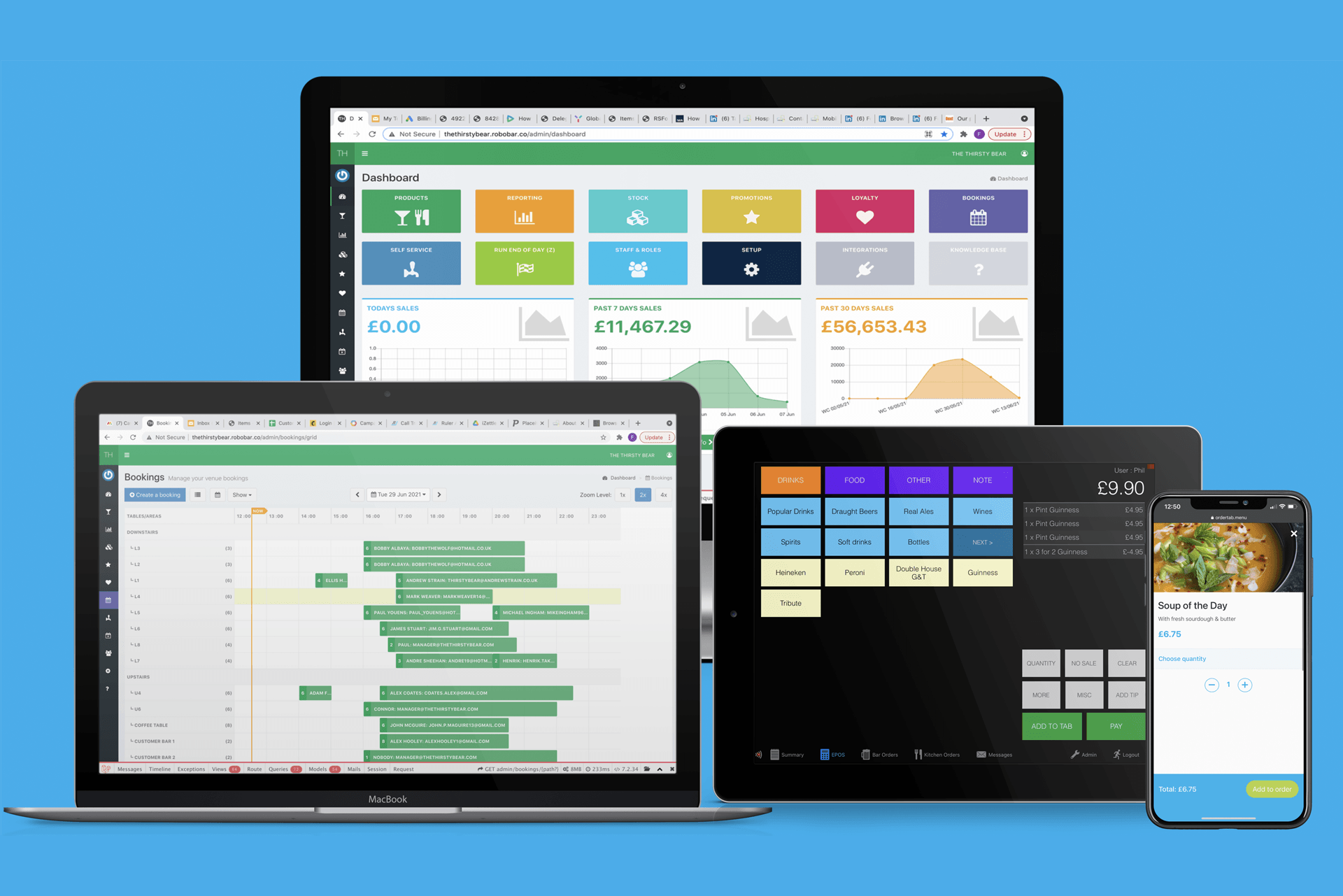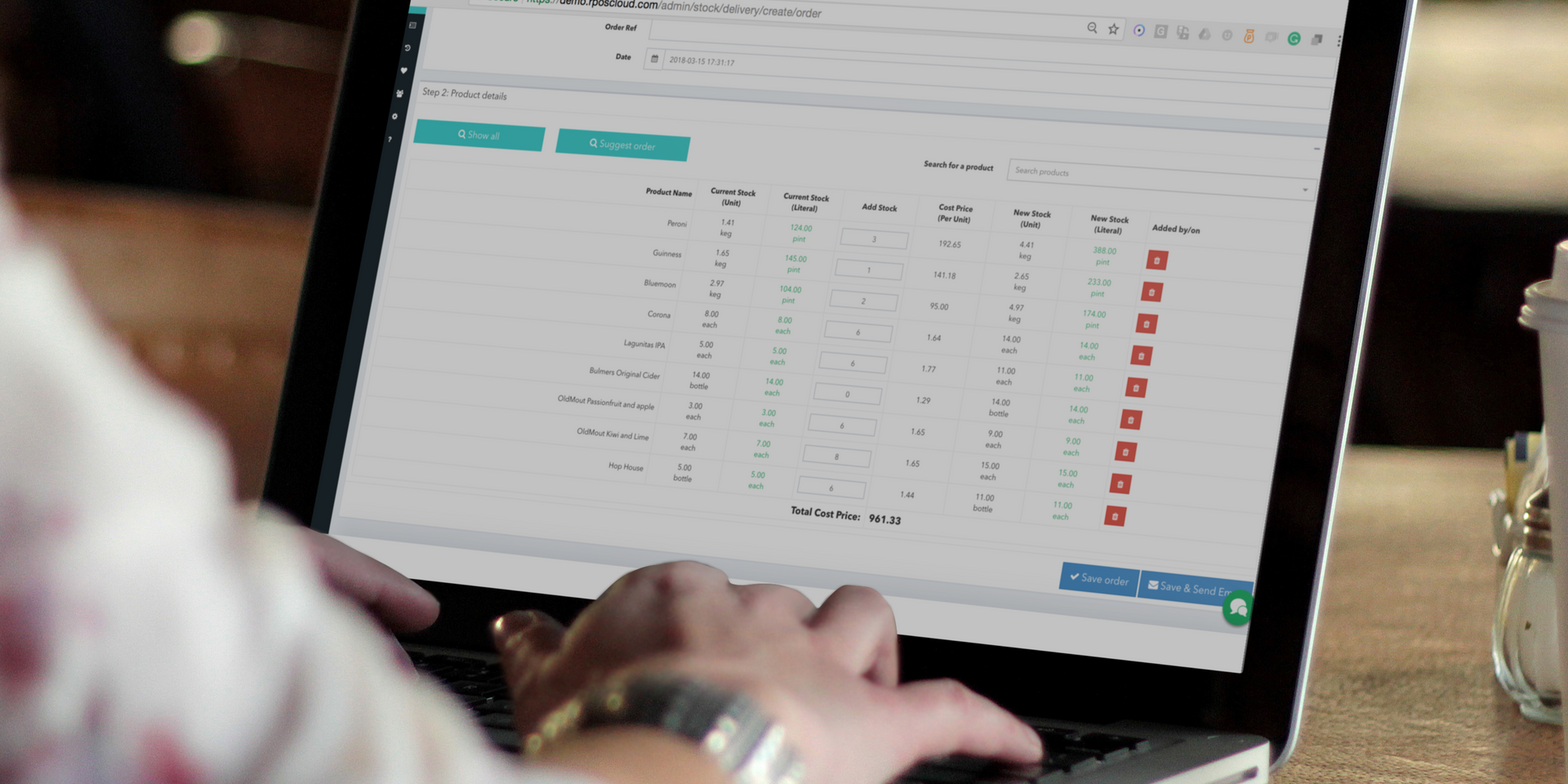Hospitality systems - when, where & how to integrate
With the ever-increasing range of apps & technologies available to help you run your hospitality business, integration between systems is now essential.
Your hospitality EPOS is at the heart of your business and contains a wealth of data that can be put to effective use by other systems, from staff scheduling tools to accounting platforms. Many systems also feed into your EPOS, whether you’re taking mobile orders from a table service app, or deposits from a booking system.
In this article we look at the different ways in which you can integrate different systems and the pros & cons of each.
1. Manual / no integration
If two systems rely on the same data, but are not integrated, there will need to be a level of manual interaction between them. This could be as simple as a user reading from one system and entering into another, or exporting data from one system to load into another.
Examples of manual integrations are:
- A mobile ordering system that is not linked to an EPOS, resulting in staff needing to key orders into the till
- A booking system that is not linked to an EPOS, resulting in staff needing to check multiple systems and key deposits into their EPOS
- An EPOS system that is not linked to an accounts platform, resulting in a bookkeeper needing to manually enter sales, purchases and payments into the accounting system
- An EPOS system that is not linked to a card machine, meaning staff need to key the amount to be paid into the card machine
Pros:
- If there is no existing integration option, and any interactions are simple and infrequent, manual integration could be preferable to a high up-front cost to develop a custom integration
Cons:
- High ongoing cost of time moving data between systems
- Error prone as mistakes can easily be made keying from one system to another
- Opportunities for fraud through deliberate mis-keying

2. Third party integration
Two systems that rely on some common data but are provided by different companies may be able to talk to each other via a third-party integration. This is where one company publishes an API (Application Programming Interface) or SDK (Software Development Kit) which enables other systems to communicate with it.
Examples of third-party integrations are:
- An EPOS system that sends sales, purchases and payments to an accounting system
- A delivery service that sends orders to an EPOS
- A booking system that sends deposit information to an EPOS
- An EPOS that sends card payment amounts to a connected card machine
Pros:
- Ongoing manual effort is reduced or removed
- Elimination of manual keying errors, or deliberate fraud
- Wide choice of multiple different third-party systems for each function
Cons:
- Potential up front cost to implement for custom integrations (though not if the systems already have an integration available)
- Data available to systems is limited to exactly what is shared, which can limit what you can do with the integration
- Issues require two companies’ resources to resolve, making them difficult to troubleshoot & fix
- Feature requests or improvements will involve buy in from two companies
3. Integrated by design
A system that is built to include multiple functions, that would usually require separate systems, is integrated by design. There is no need for a third-party integration as the functions are part of one system so already have access to the same data.
Examples of integration by design are:
- An EPOS system that incorporates a mobile ordering system so orders feed straight into the EPOS
- An EPOS system that incorporates a booking system, so bookings can be accessed on the EPOS and deposits easily accounted for
- An EPOS that incorporates a staff scheduling system, so sales information is readily available for forecasting & wage percentage calculations
Pros:
- Ongoing manual effort is reduced or completely removed
- Removal of manual keying errors
- One system to log in to
- One system for staff to learn
- One point of contact for any questions or issues
- Each function has access to all the data of all the incorporated functions leading to functionality that may not be possible with third party integrations
- Improvements and feature requests only involve one company's buy in
Cons:
- Limited choice of genuine Integrated by design systems
- May involve some compromise on features vs multiple third-party systems

Conclusion
There is likely a place in most businesses for each type of integration. Where data transfer between systems is simple and infrequent, some manual effort to pass data from one system to another may be preferable to a complex and costly integration.
Third party integrations are a great option where two very different and complex systems need to share or pass data from one to another, and the ongoing effort of manual integration would prove very costly over time, such as an EPOS passing data to an accounting package.
Integrated by design is the optimal level of integration if you find can the key tools you need in one system, but may still need to be supplemented by manual or third-party integrations in areas where you have particularly complex or niche requirements.
Our hospitality EPOS is a genuine integrated by design system incorporating mobile ordering, booking system, stock management & staff scheduling tools. Our third-party integrations include popular accounting packages & delivery services. Contact our team now if you would like to learn more.





